Transcription of the Northwestern University Bulletin, 6 December 1919
NORTHWESTERN UNIVERSITY BULLETIN
VOL. XX, No. 23 December 6, 1919
THE FOUR YEAR CURRICULUM IN LAW
On December 7, 1918, the Executive Committee of the Association of American Law Schools adopted a resolution, beginning as follows:
”Resolved, that this Association approves of extending to four years the course leading to the first degree in law, provided that the aggregate time devoted to collegiate and professional studies shall not exceed seven years.”
Northwestern University herewith announces the four-year curriculum of law studies leading to the first degree in law. This requirement of a four-year course had already been adopted by the University in November, 1916, to take effect September, 1918; but by vote of June, 1917, the date of taking effect was postponed during the continuance of the war.
The requirement of a four-year course is the first to be adopted in the United States pursuant to the above vote of the Executive Committee of the Association of American Law Schools.
ADMINISTRATIVE OFFICERS
Lynn Harold Hough, B.A., B.D., D.D., President of the University.
John Henry Wigmore, M.A., LL.B., LL.D., Dean.
Frederic Beers Crossley, LL.B., Secretary and Librarian.
FACULTY†
John Henry Wigmore, M.A., LL.B., LL.D.
Frederic Beers Crossley, LL.B.
*Charles Cheney Hyde, M.A., LL.B.
Charles George Little, B.A., LL.B.
Louis May Greeley, B.A., LL.M.
George Purcell Costigan, Jr., M.A., LL.B., LL.D.
Albert Kocourek, M.A, LL.B.
Robert Wyness Millar, M.A., LL.B.
Herbert Lincoln Harley, LL.B.
Francis S. Philbrick, B.S., A.M., Ph.D., LL.B.
Charles Byrd Elder, LL.B.
Otto Raymond Barnett, LL.B.
Henry Clay Hall, M.A., LL.B.
Charles Yoe Freeman, B.A., LL.B.
Alfred William Bays, B.S., LL.B.
Richard Yates Hoffman, B.A., LL.B.
Mitchell Davis Follansbee, B.A., LL.B., LL.D.
Elmer Martin Leesman, LL.B.
William Henry Dyrenforth, LL.B.
Charles Hamilton Watson, B.A., LL.B.
James Jackson Forstall, B.S., LL.B.
Louis Goldsborough Caldwell, LL.B., B.A.
George Albert Berry, Jr., LL.B.
Stephen Love, LL.B.
Edward George Berglund, B.A., LL.B.
Harris Carman Lutkin, B.A., LL.B.
Howard F. Bishop, A.B., LL.B.
John Scott Matthews, M.A., LL.B.
Homer Hunt Cooper, LL.B.
Stanley Rich, B.S., LL.B.
William Harrison Haight, B.A., LL.B.
Theodore Schmidt, LL.B.
Harleigh Holroyd Hartman, M.A., LL.B.
Ira Edward Westbrook, M.A., LL.B.
Ralph Reynaud Hawxhurst, LL.B.
Fred Thulin, LL.B.
John Darrow Hubbard, B.A., LL.B.
* Absent on leave.
†The second group includes those who have offices in the School building. The third group includes all other members who under the statutes of the University have seats in the Faculty as officers of government. In the last two groups the names are given in the order of seniority of appointment.
Northwestern University Law School
CURRICULUM AND REQUIREMENTS
for the
Four-Year Course in Law
1. GENERAL STATEMENT.
2. CURRICULUM.
3. PRESCRIBED AND SELECTIVE SUBJECTS; METHODS OF INSTRUCTION.
4. PROGRAM-CHART OF STUDIES.
5. REQUIREMENTS FOR PROMOTION AND GRADUATION.
- GENERAL STATEMENT
In preparing the curriculum and requirements for the four-year course of studies leading to the degree of J. D., the Faculty of Law has kept in view the following principal objects:
(1) To ensure for every graduate a thorough training in the use of original sources, and a rigid mental discipline, with a view to the formation of those habits of independent legal thinking which ought to be the fundamental possession of every member of the legal profession ;
(2) To ensure for every graduate a general intelligent acquaintance with the elemental principles in the entire orthodox compass of the technical subjects of law, and thus to qualify him to do mature work in the later stages of his study and to equip him to approach any legal problem without serious gaps in large fields of essential legal information;
(3) To ensure for every graduate some understanding of those non-technical legal subjects which develop breadth of view and qualify him to render public service as a leader of professional and civic thought;
(4) To attain these results, in point of method, by using the most approved practices, and in particular by assuring to every student, on the part of the Faculty, from time to time, an individual valuation of the quality of his work, and a personal attention to his individual needs and capacities for attaining the expected standards.
The special features of the curriculum and requirements described below are based directly on one or another of those objectives.
CURRICULUM (1)
FIRST YEAR
1. GENERAL SURVEY OF THE LAW—Six term-hours. (Textbook to be announced.) Professors Wigmore, Kocourek and Bays.
2. CONTRACTS—Nine term-hours. Williston’s Cases on Contracts. Professor Costigan.
3. TORTS—Five term-hours. Wigmore’s Cases on Torts. Professor Wigmore.
4. PROPERTY I—Four term-hours. Warren’s Cases on Property. Professor Philbrick.
5. PROCEDURE (COMMON LAW)—Six term-hours. Keen’s Cases on Common Law Pleading; Keigwin’s Precedents in Pleading. Professor Millar.
6. PERSONAL PROPERTY—Two term-hours. Warren’s Cases on Property. Professor Kocourek.
7. LEGAL BIBLIOGRAPHY—Two term-hours. Selected materials. Professor Crossley.
8. PROFESSIONAL ETHICS—Two term-hours. Costigan’s Cases on Legal Ethics. Professor Crossley.
SECOND YEAR
9. GENERAL SURVEY OF THE LAW—Six term-hours. (Textbook to be announced.) Professors Kocourek, Wigmore and Bays.
10. EQUITY JURISDICTION—Eight term-hours. Ames’ Cases on Equity Jurisdiction. Professor Philbrick.
11. TRUSTS—Five term-hours. Ames’ Cases on Trusts. Professor Costigan.
12. PROCEDURE (EQUITY and CODE)—Two term-hours. (Text-books to be announced.) Professor Millar.
13. PROPERTY II (Acquisition of property inter vivos.)—Three term-hours. Gray’s Cases on Property, Vol. III. Professor Philbrick.
14. PROPERTY II (Devolution of property at death.) Two term-hours. Costigan’s Cases on Wills, Descent, and Administration. Mr. Hoffman.
15. *AGENCY (including Employer’s Liability)—Three term-hours. Reinhard’s Cases on Agency. Professor Costigan.
16. CARRIERS—Three term-hours. Beale’s Cases on Carriers. Professor Greeley.
17. QUASI-CONTRACTS—Three term-hours. Woodruff’s Cases on Quasi-Contracts. Professor Costigan.
18. NEGOTIABLE INSTRUMENTS—Three term-hours. Smith and Moore’s Cases on Bills and Notes. Professor Greeley.
19. EVIDENCE—Four term-hours. Wigmore’s Cases on Evidence, 2d ed. Professor Wigmore.
20. LEGAL BIOGRAPHY AND LITERATURE—Three term-hours. Selected materials, as described in the Annual Bulletins. Professor Wigmore.
THIRD YEAR
Group One
21. CORPORATIONS—Six term-hours. Warren’s Cases on Corporations. Professor Little.
22. PRACTICE I (Moot Court)—Three term-hours. Selected materials. Professor Bays.
23. LEGAL CLINIC—Three term-hours. Mr. Leesman, and Officers of the Legal Aid Bureau of the United Charities of Chicago.
Group Two
24. LEGISLATION—Six term-hours. Selected materials.
I. Problems of Contemporary Legislation. Professors Harley and Wigmore.
*II. Statutes. Professor Harley.
*III. Methods of Legislature Drafting. Professor Harley.
25. JURISPRIDENCE AND LEGAL PHILOSOPHY. Six term-hours. Selected materials.
I. Analytic Jurisprudence. Professor Kocourek.
II. Evolution of Law. Professor Kocourek.
*III. Philosophy of Law. Professor Kocourek.
26 LEGAL HISTORY
I. History of Anglo-American Legal Institutions. Professor Philbrick.
*II. American Legal History, National and State. Professor Philbrick.
27. INTERNATIONAL LAW—Six term-hours. Selected materials.
I. General International Law. Mr. Watson.
II. International Constitutional Law (League of Nations). Mr. Caldwell.
28. COMPARATIVE LAW—Six hours a week. Selected materials.
I. Roman Law. Professor Kocourek.
II. Comparative Law of Modern Nations. Professor Philbrick.
29. CRIMINAL LAW AND CRIMINOLOGY—Six hours a week. Selected materials.
I. Criminal Law. Professor Millar.
II. Criminal Procedure. Professor Millar.
*III. Modern Methods in Applied Criminal Science. President Hough, Professor Gault, and others.
Group Three
(Each course given for one term-hour only, unless for more at the instructor’s discretion. In 1919-20, for courses given for more than one term-hour, the small figures placed after the title of the course show the number of term-hours.)
30. *ADMINISTRATIVE LAW. Professor Elder.
31. *ADMIRALTY. Professor Millar.
32. BANKRUPTCY. Professor Kocourek.
33. CONVEYANCING. (3) Professor Greeley.
34. CORPORATION PRACTICE. Mr. Freeman.
35. CRIMES. (4) Professor Millar.
36. DAMAGES. (2) Mr. Love.
37. *FEDERAL JURISDICTION. Mr. —-
38. ILLINOIS PRACTICE. (2) Professor Millar.
39. INSURANCE (Fire). (1¼) Professor Hall.
40. INSURANCE (Life). (1½) Professor Hall.
41. INTERSTATE COMMERCE. Professor Elder.
42. *IRRIGATION. Professor Costigan.
43. JUDMENTS, AND AUXILIARY LEGAL REMEDIES. Professor Elder.
44. JUDICIAL PROOF. Professor Wigmore.
45. MILITARY LAW. Professors Millar and Wigmore.
46. MINING. (3) Professor Costigan.
47. MORTGAGES. (3) Professor Greeley.
48. *MUNICIPAL CORPORATIONS. Mr. —-
49. PARTNERSHIP (and other Unincorporated Associations). (3) Professor Little.
50. *PERSONS. Mr. Leesman.
51. PROPERTY III, FUTURE lNTERESTS. (5) Professor Philbrick.
52. PUBLIC UTILITIES. Professor Elder.
53. SALES. Professor Kocourek.
54. SURETYSHIP. (3) Professor Little.
55. TAXATION. (2) Mr. Thulin.
56. ADVANCED WORK in subjects of the First and Second-Year curriculum. Various members of the Faculty.
FOURTH YEAR
Group One
60. CONSTITUTIONAL LAW—Six term-hours. Wambaugh’s Cases on Constitutional Law. Mr. Forstall.
61. CONFLICT OF LAWS—Four term-hours. Bale’s Cases on Conflict of Laws. Professor Costigan.
62. PRACTICE II (Practice Court)—three term-hours. Selected materials. Professor Millar.
63. ILLINOIS STATE LAW—Six term-hours. Selected materials, as described in Bulletins. Messrs. Berry, Berglund, Bishop, Cooper, Forstall, Haight, Hartman, Hawxhurst, Hoffman, Leesman, Love, Lutkin, Matthews, Rich, Schmidt and Westbrook.
Group Two
24-29. ( Courses in the subjects in this Group as described under the Third-Year curriculum.)
Group Three
30-59. ( Courses in the subjects in this Group as described under the Third-Year curriculum.)
(1) For each subject, the total term-hours are stated; the distribution of hours by terms is shown in the Program-Chart.
A term-hour is one hour a week for a term, i. e., one quarter of a calendar year.
*Omitted in 1919-20.
3. PRESCRIBED AND SELECTIVE SUBJECTS; METHODS OF INSTRUCTION.
(1) The first two and the last two years represent two separate and graded stages of the legal training.
In the first two years all students are given a practically uniform course. The instruction is conducted in classes, alike for all. The course-subjects represent the elemental legal ideas which constantly recur in the body of the law, and which must be mastered in order to undertake profitably the work of the last two years; these subjects being to the Law what Arithmetic, Algebra, Geometry, and Trigonometry are to Mathematics. The General Survey course completes the student’s acquaintance with the general body of the law, so as to equip him with elemental information on the optional technical subjects which he may not take in the last two years of the curriculum.
In the last two years, the student completes the remaining fundamental technical subjects. He now enters upon the practical application of his knowledge and skill, in the courses in Legal Clinic and Practice. He also progresses to the courses of legal science, enlarging his view and liberalizing this technical knowledge. At the same time, he selects additional technical courses in which the work is individually assigned to each student, and his capacity to handle for himself new legal problems is observed and stimulated ; in courses listed as Group Three, this individual method will be freely used.
(2) Specific and Selective Requirements.
(a) In the First Year, the program of courses is identical for all students; no opportunity for selection is offered.
(b) In the Second Year, no opportunity for selection is offered; except in the first term, as between Carriers, Agency, and Quasi-Contracts.
(c) In the Third Year, four term-hours in each term in Group one, being all three of the courses, are specifically required. In Group Two, four term-hours of courses, representing two subjects, are to be selected ir1 each term from the six subjects offered ; the selection of subjects may be changed in each term. In Group Three, five term-hours are to be selected from the eight or nine subjects offered anew in each term; each subject being offered for one term-hour, but, in the discretion of the instructor, for more term-hours. If more than four term-hours are selected in Group Two, the selection in Group Three may be of only enough to make up the required total of term-hours.
(d) In the Fourth Year, five term-hours in each term in Group One are required; or six term-hours, if the student intends to practice in Illinois. In Groups Two and Three, the remaining necessary number of term-hours in each term are to be selected from the whole list of courses in both Groups, without specific requirements.
(3) Method of Instruction.
(a) In the courses of the First and Second Years, the method of instruction is by the study and analysis of selected judicial opinions and by class-discussion; except that in the General Survey course and the Legal Biography course the materials for study consist of appropriate treatises on which the student reports and is examined.
(b) In the Group One courses of the Third and Fourth Years, the same method (case-analysis and class-discussion) is used for the Courses in Corporations, Constitutional Law, and Conflict of Laws. In the course in Practice I, a public moot court, with individual briefs and arguments, is conducted. In Practice II (Practice Court), causes are prepared and conducted through all details of litigation. In the Legal Clinic, cases brought to the Legal Aid Bureau of the United Charities of Chicago are investigated, legal advice given, and negotiation and litigation attended to, by individual assignment, under the direction of the officers of the Bureau and a member of the Faculty of Law.
In the Group Two courses, the method of instruction is either by class-lectures and discussion, or by assignment of individual work, as in Group Three courses; depending upon the subject and the instructor’s discretion.
In the Group Three courses, the method of instruction is ordinarily by assignment of individual work. Where that method is followed, the course is opened by as many class-lectures as the instructor deems necessary, a treatise is assigned for perusal and reference, and one or more problems calling for individual independent research are then assigned to each member of the class for a report. Personal consultation then follows, until the instructor is satisfied with the quality of the work. By this method, each student’s individual needs are individually studied by the instructor and receive his personal advice and assistance, and an individual valuation of the student’s capacity is more nearly attainable.
4. PROGRAM-CHART OF STUDIES
The general program of the four-year course, resulting from the foregoing curriculum and requirements, is shown graphically in the following:
[Graphs have been excluded from this transcript, but can be seen on slides 10 and 11 above.]
5. REQUIREMENTS FOR PROMOTION AND GRADUATION.
GRADUATION.
(1) To be recommended for a degree in Law, a student must have obtained credit for courses amounting to 132 term-hours (44 year-hours) in all.
(In this and other reckoning of credit, the following gradings are used: A, B, C, D; grade D gives no credit whatever; grade C gives credit for not more than one-sixth of any required number of credits; grade B gives full credit; grade A gives full credit, and also enables an equal number of grade C marks to be additionally reckoned.)
(2) The courses represented by the above 132 term-hours must be distributed among the several parts of the curriculum in not less than the following proportions:
First and Second Year courses, and Third and Fourth Year Group A courses (including Legal Biography,
Practice Court and Legal Clinic) . . . . . . . . . . 80 term-hours
Third and Fourth Year Group B courses. . . . . . . . . . 12 term-hours
Third and Fourth Year Group C courses. . . . . . . . . . 15 term-hours
The remaining credits, which may be in any courses whatever, amount to
. . . . . . . . . . . . . . . . . . . . . . . . . 25 term-hours
_________________
Making the total of . . . . . . . . . . . . . . . . . . . . . . . . 132 term-hours
(3) The above requirement of 132 term-hours’ credit is reduced to 112 term-hours for students holding a bachelor’ s degree in Arts or Science from an approved college.
The distribution of this amount among the required Groups of courses becomes, for such students, 70, 10, and 12 term-hours respectively.
PROMOTION
(1) For promotion from one year to the next, formal application must be made. Each applicant must have obtained, for promotion
To the Second Year . . . . . . . . . . . . . . . . . . . . . . . . . . 27 term-hours
To the Third Year . . . . . . . . . . . . . . . . . . . . . . . . . . . . 63 term-hours
To the Fourth Year . . . . . . . . . . . . . . . . . . . . . . . . . . 90 term-hours
(2) At the close of each School year, the names of all students applying for promotion will be considered by the Faculty, and in individual cases promotion may be granted or refused on other sufficient grounds, by exception to the foregoing rule.
(3) At the end of each School year, a student not found to be entitled to promotion to the next succeeding class, may remain in the School, as candidate for a degree in one additional year from the beginning; unless by vote of the Faculty he is requested to withdraw.

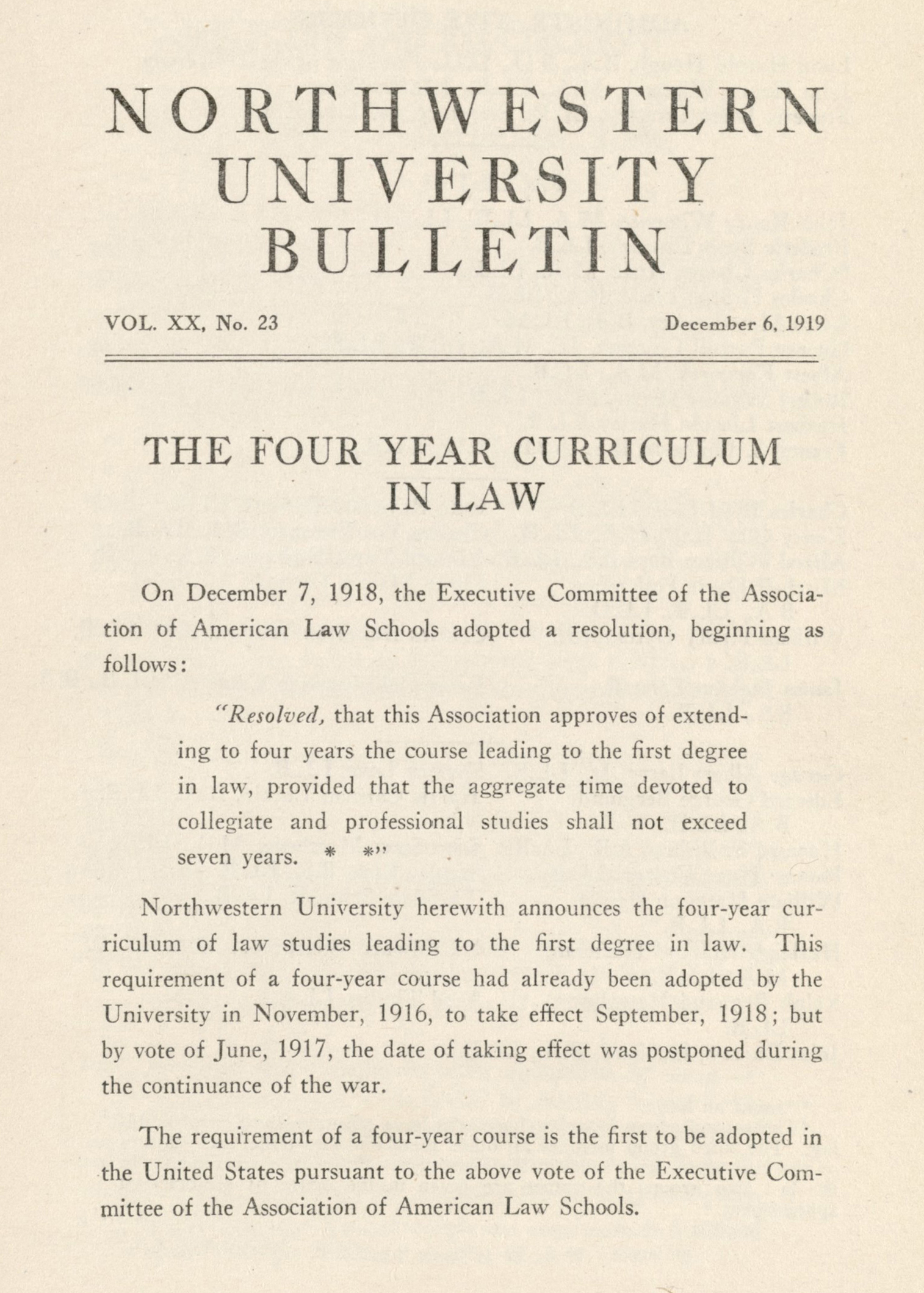

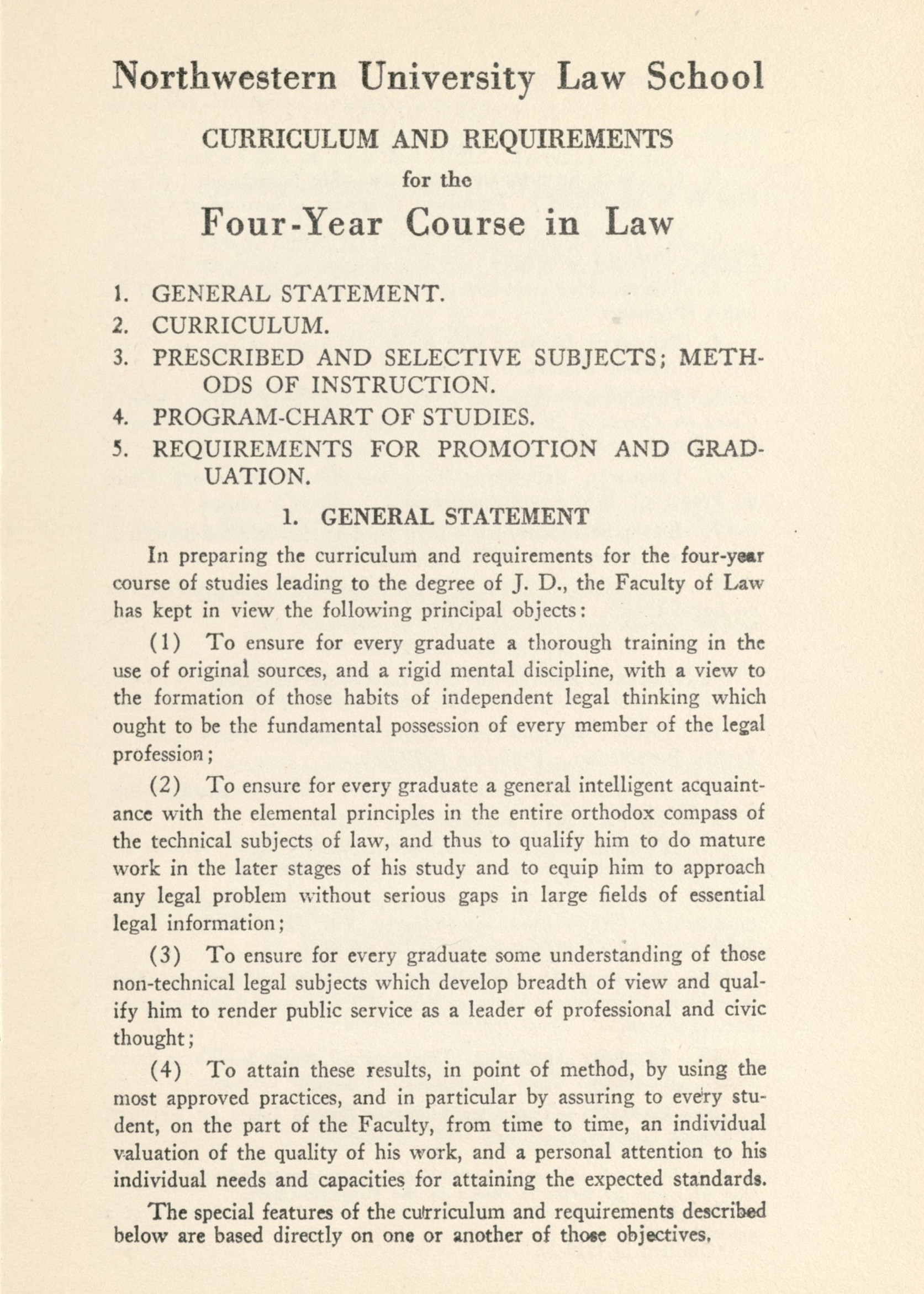

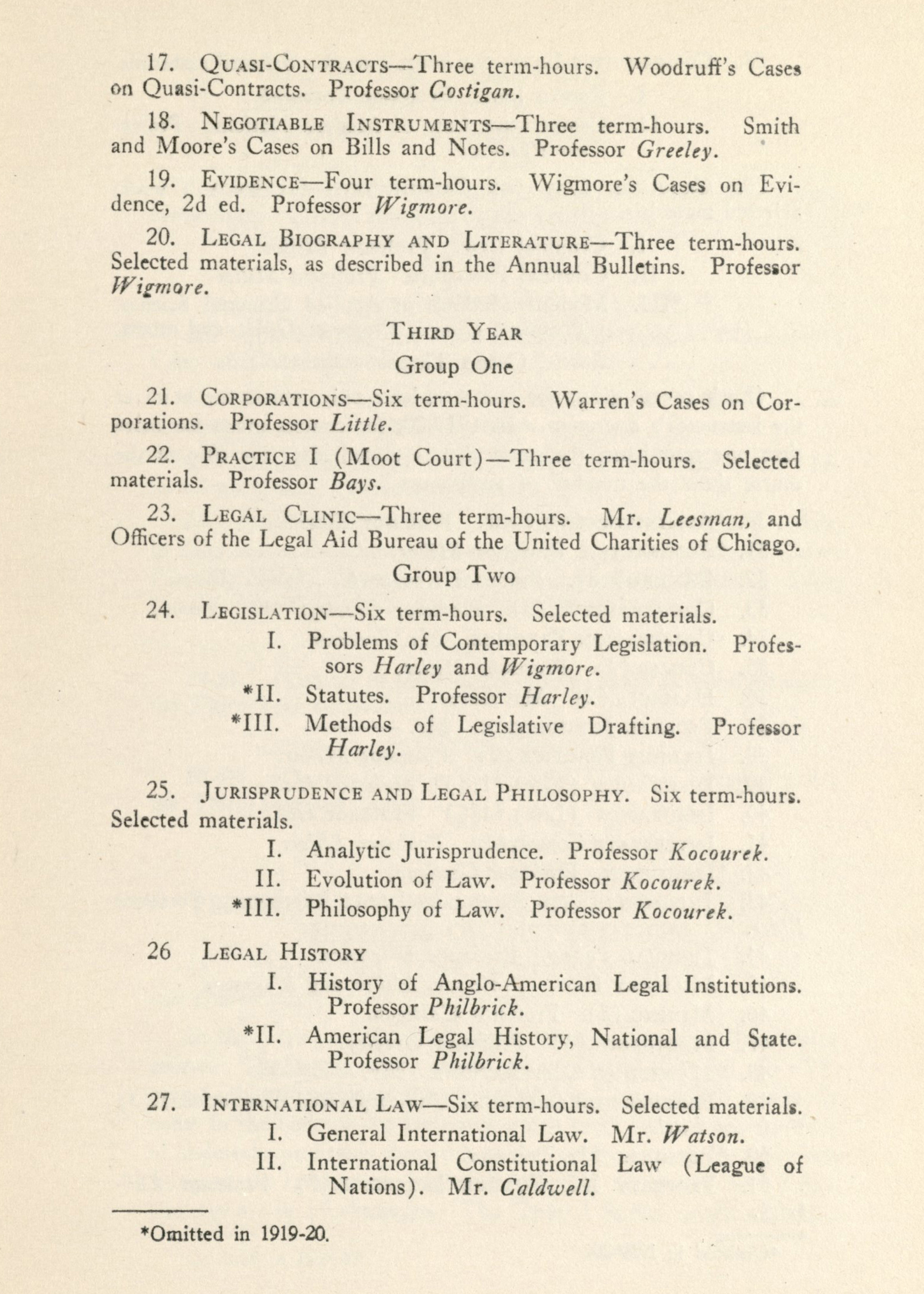

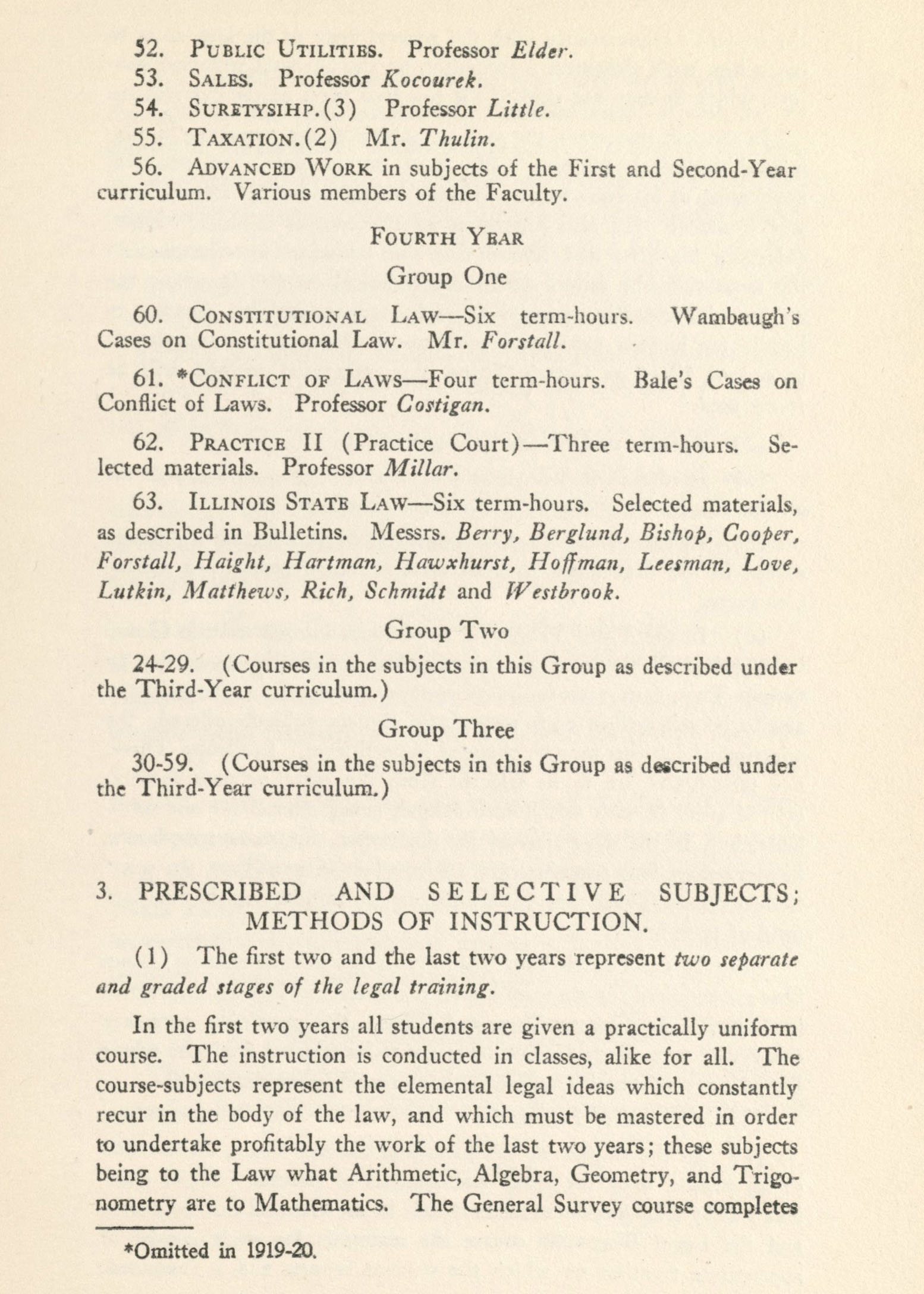


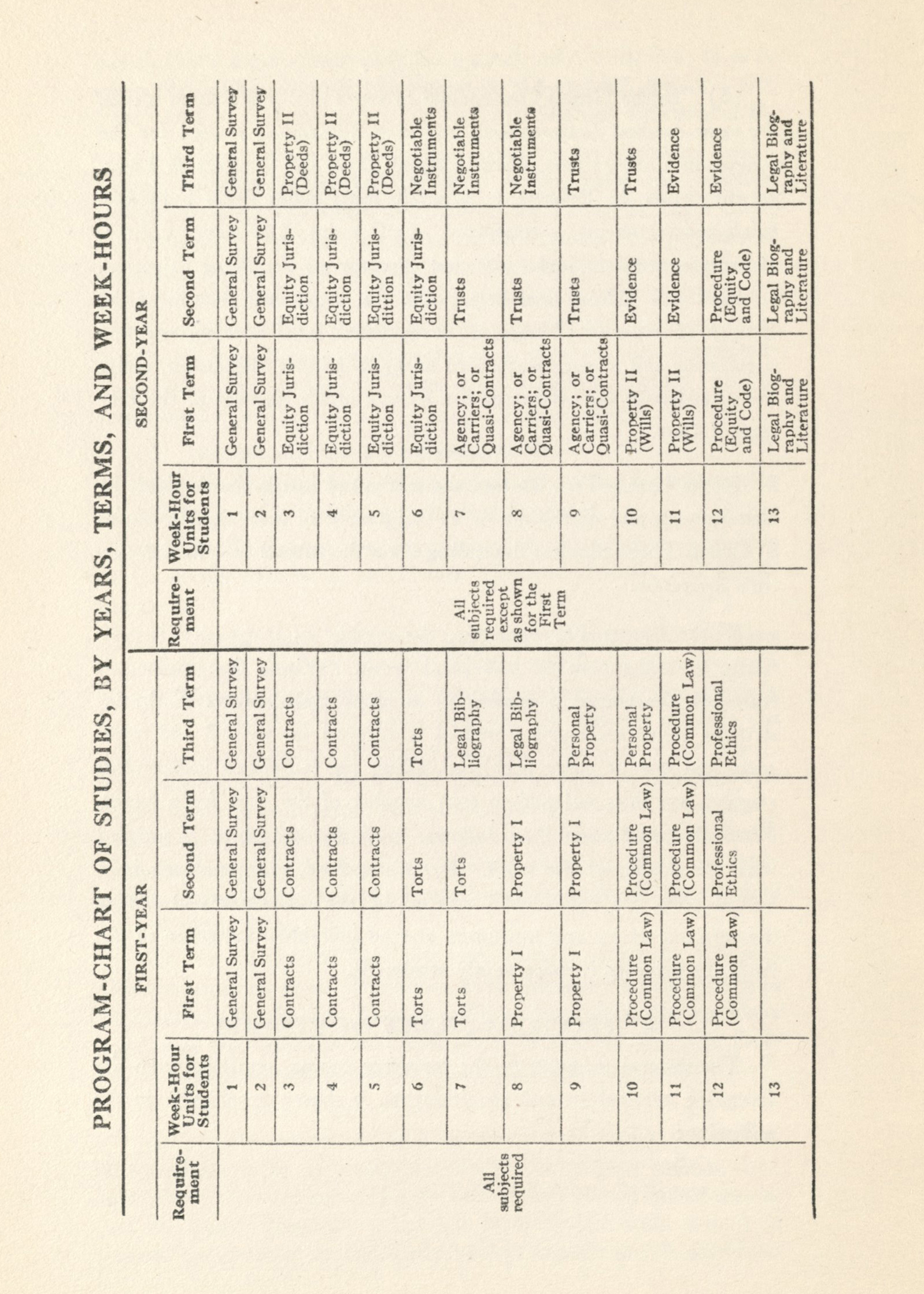


1 comment for “Northwestern University Bulletin, 1919”